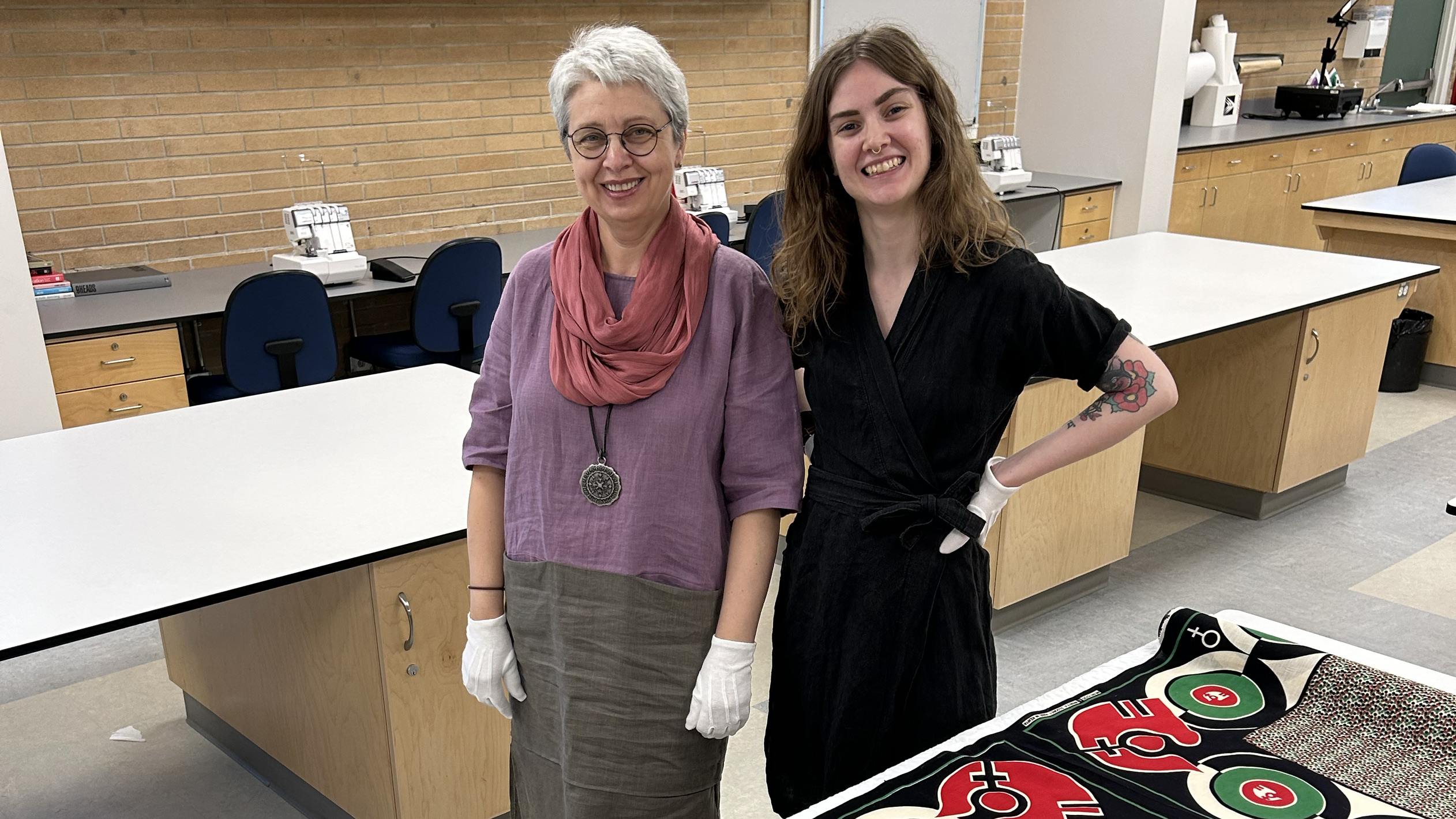A maverick of material culture
Anna Schmidt - 5 August 2024

(Pictured left to right) Vlada Blinova and Zoe Wagner were both deeply impacted by the Anne Lambert Clothing and Textiles Collection.
In an unassuming brick building on the west side of campus, a portrait marks the entrance to the University of Alberta’s Human Ecology Gallery. As Vlada Blinova passes the spot each day, she greets the framed photo.
“I walk in and I say, ‘Hi, Anne,’” says Blinova, manager of the Anne Lambert Clothing and Textiles Collection and a longtime friend and colleague of Anne Lambert. For 35 years, Lambert served as curator of the collection that now bears her name, engaging hundreds of students in the hands-on study of textiles.
“Her enthusiasm and knowledge and passion for textiles and clothing — it was contagious … Anne was so exciting to be with and to study material culture with,” says Blinova.
Lambert passed away earlier this year, and as the university community grieves her loss, students continue to benefit from the generosity of her and her husband, David Howatt. Seeking to honour his wife’s life work, Howatt named the U of A as the beneficiary of Lambert’s life insurance policy, benefiting the Textile Conservator Endowment Fund and supporting the preservation of the collection for student use.
The collection is among the five largest textile museums in Canada and the only teaching resource of its kind across the country, boasting over 23,000 artifacts of local and international significance, from a Cree powwow cape to Ghanaian wrap cloths to a unique pair of 1970s platform boots worn by a U of A grad.
“Having this resource literally next door to the classroom, it’s absolutely irreplaceable. The tangible power of the object — you can’t compare it to even the best picture on a screen,” says Blinova, who teaches in the Clothing, Textiles & Material Culture program.
The collection is integral to both teaching and research in the Department of Human Ecology, as students explore the history of textiles, learn to conserve centuries-old artifacts and work alongside staff to curate public exhibitions.
“The Anne Lambert Clothing and Textile Collection has completely changed me both personally and professionally,” says Zoe Wagner, a U of A master’s student in material culture. “I came into the university as a mature student, not really knowing my purpose or my path in life. When I was introduced to the collection, it was like something clicked.”
Wagner recently worked alongside Blinova to host a virtual exhibition showcasing printed textiles from the African continent with embedded political messages. “Although I never got the opportunity to meet Professor Lambert, her legacy is so felt in this department. The meaning that this collection brings to students, to have this hands-on experience with textiles is, from an education standpoint, absolutely incredible,” says Wagner.
Lambert was especially passionate about engaging students in the profound social and political role of clothing, adds Blinova. For example, the museum contains many recycled and upcycled items, providing students with historical inspiration for sustainable textile practices. It also features many artifacts made by Indigenous peoples around the world, supporting scholars in recognizing these unique styles.
“Anne was a maverick — she was somebody who looked ahead. She was very creative and community-oriented,” says Blinova.
“I hear all the time from students about how meaningful it is for them to have this resource,” says Wagner. “Years later, every student who comes through these doors will know the collection and know the legacy of Professor Anne Lambert.”